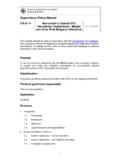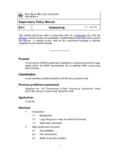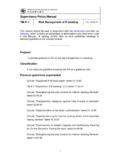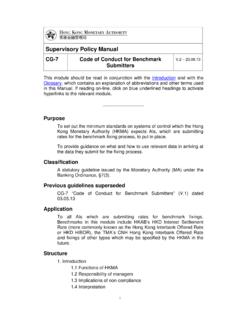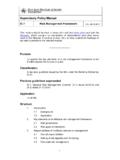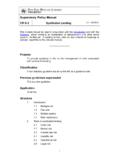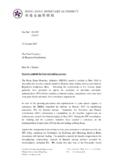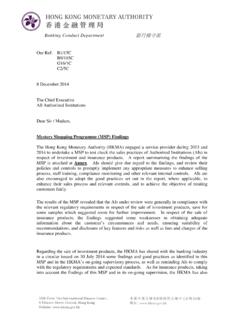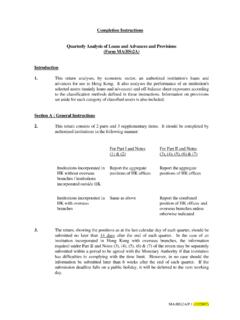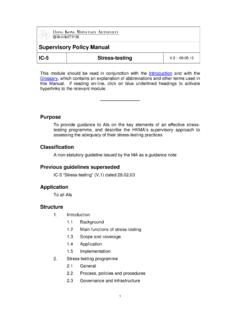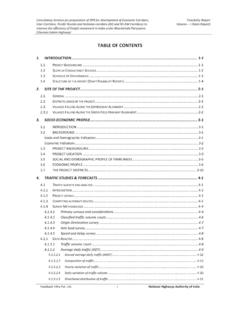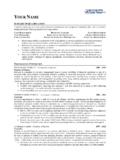Transcription of Comparing Forecast Performance of Exchange Rate …
1 Working Paper 08/2008 June 2008 Comparing Forecast Performance OF Exchange RATE MODELS Prepared by Lillie Lam, Laurence Fung and Ip-wing Yu1 Research Department Abstract Exchange -rate movement is regularly monitored by central banks for macroeconomic- analysis and market-surveillance purposes. Notwithstanding the pioneering study of Meese and Rogoff (1983), which shows the superiority of the random-walk model in out-of-sample Exchange -rate Forecast , there is some evidence that Exchange -rate movement may be predictable at longer time horizons. This study compares the Forecast Performance of the Purchasing Power Parity model, Uncovered Interest Rate Parity model, Sticky Price Monetary model, the model based on the Bayesian Model Averaging technique, and a combined Forecast of all the above models with benchmarks given by the random-walk model and the historical average return.
2 Empirical results suggest that the combined Forecast outperforms the benchmarks and generally yields better results than relying on a single model. JEL Classification Numbers: C11, C52, C53 Keywords: Bayesian Analysis, Model Evaluation and Selection, Forecasting and Other Model Application Author s E-Mail Address: 1 The authors acknowledge the comments from Hans Genberg and Cho-hoi Hui. The views and analysis expressed in this paper are those of the authors, and do not necessarily represent the views of the Hong Kong Monetary Authority.
3 - 2 - Executive Summary: Exchange -rate movement is regularly monitored by central banks for macroeconomic-analysis and market-surveillance purposes. Despite its importance, forecasting Exchange rate has been a challenge since the collapse of the Bretton Woods System. Abundant studies in the literature show that Exchange -rate models perform poorly in out-of-sample prediction analysis, even though some of them have good fit in-sample analysis. This paper studies Exchange -rate predictability based on different theoretical and empirical models, including the Purchasing Power Parity model, Uncovered Interest Rate Parity model, Sticky Price Monetary model and the model based on the Bayesian Model Averaging technique, and a combination of these models forecasts.
4 It presents out-of-sample forecasts of the euro, British pound and Japanese yen against the US dollar in the horizons of one-quarter to eight-quarter ahead. Empirical results show that depending on the currencies and the Forecast horizons, some of these models outperform common benchmarks given by the random-walk model and the historical average return. No single model consistently stands out as the best Exchange -rate forecasting model when assessed by different criteria. The combined Forecast is in general better than the Forecast based on a single model when the root-mean-squared Forecast error and the direction of change statistics are used as the criteria.
5 Given the limitation of individual models, predictions based on them should be used with caution. - 3 - I. INTRODUCTION Exchange rate movement is an important subject of macroeconomic analysis and market surveillance. Despite its importance, forecasting the Exchange rate level has been a challenge for academics and market practitioners. The collapse of the Bretton Woods system of fixed Exchange rates among major industrial countries marked the beginning of the floating Exchange rate regime. Since then, there has been considerable interest in forecasting Exchange rate movements. However, empirical results from many of the Exchange rate forecasting models in the literature, no matter they are based on the economic fundamentals or sophisticated statistical construction, have not yielded satisfactory results.
6 For example, Mussa (1979) concludes that the spot Exchange rate approximately follows a random-walk process and most changes in Exchange rates are unexpected. This was also supported by the seminal work of Meese and Rogoff (1983), which shows that none of the structural Exchange rate models used in their paper could significantly outperform a simple random-walk model in both short- and medium-terms. The results in many follow-up empirical studies, though somewhat mixed, have broadly reached similar conclusions. Even when the in-sample forecasts of the Exchange rate models perform well, the out-of-sample forecasts are disappointing when compared to those of a na ve random-walk Motivated by the recent work of Wright (2003), who argues that a model based on the Bayesian Model Averaging (BMA) technique gives promising results for out-of-sample Exchange rate prediction compared to the random-walk model, this paper re-examines the Exchange rate forecasting capability of some related models in a more systematic manner.
7 In addition to the BMA approach, we also study the forecasting capability of three well-discussed models in the literature, namely the Purchasing Power Parity (PPP) model, Uncovered Interest Rate Parity (UIP) model, Sticky Price Monetary (SP) model of Dornbusch (1976) and Frankel (1979), and a combined Forecast based on the above In this paper, the models forecasting performances at different time horizons (from one-quarter ahead to eight-quarter ahead) are assessed by different sets of criteria. This provides a more comprehensive and systematic way to evaluate the models. 2 For example, Meese and Rose (1991) use a variety of non-linear and non-parametric techniques to modelling Exchange rates.
8 However, negative results are obtained. Engle (1992) analyses eighteen Exchange rates and found that the Markov-switching models could perform better only in-sample but could not have out-of-sample forecasts superior to a random-walk model. For details, see Frankel and Rose (1994). 3 These models are chosen because of different reasons. For instance, the PPP model is included because of its importance in the Exchange rate literature while the SP model is a typical structural model that has been the subject of previous systemic analysis. Fore details, see the discussion in Cheng, Chinn and Pascual (2004).
9 - 4 - The remainder of this paper is organised as follows: Section II presents the specification of the five models examined in this study. Section III discusses data involved in this study and the criteria to evaluate the forecasts. Comparison of forecasts obtained from empirical estimation is presented in Section IV. Section V summarises and concludes. Technical details of the BMA are discussed in the Appendix. II. Exchange RATE FORECASTING MODELS Given that there are many candidates of empirical models available for Exchange rate determination, the models used in the paper are selected according to at least one of the following criteria: (i) prominent in economic literature; (ii) not restrictive to only theoretical or empirical model; (iii) readily replicable and available for implementation; and (iv) not previously evaluated in a systematic manner.
10 Based on the above criteria, the models examined in this study are (i) the PPP model; (ii) the UIP model; (iii) the SP model; (iv) the model based on the BMA technique; and (v) the composite specification incorporating the above four models. Purchasing Power Parity (PPP) Model The PPP model is a theoretical Exchange rate model. The model explains the movements of the Exchange rate between two economies currencies by the changes in the countries price levels. The goods-market arbitrage mechanism will move the Exchange rate to equalise prices in the two Mathematically, the Exchange rate determination under the PPP model is expressed as =tttppelnlnln (1) where te is the nominal Exchange rate, tpand tp are domestic and foreign prices respectively.
